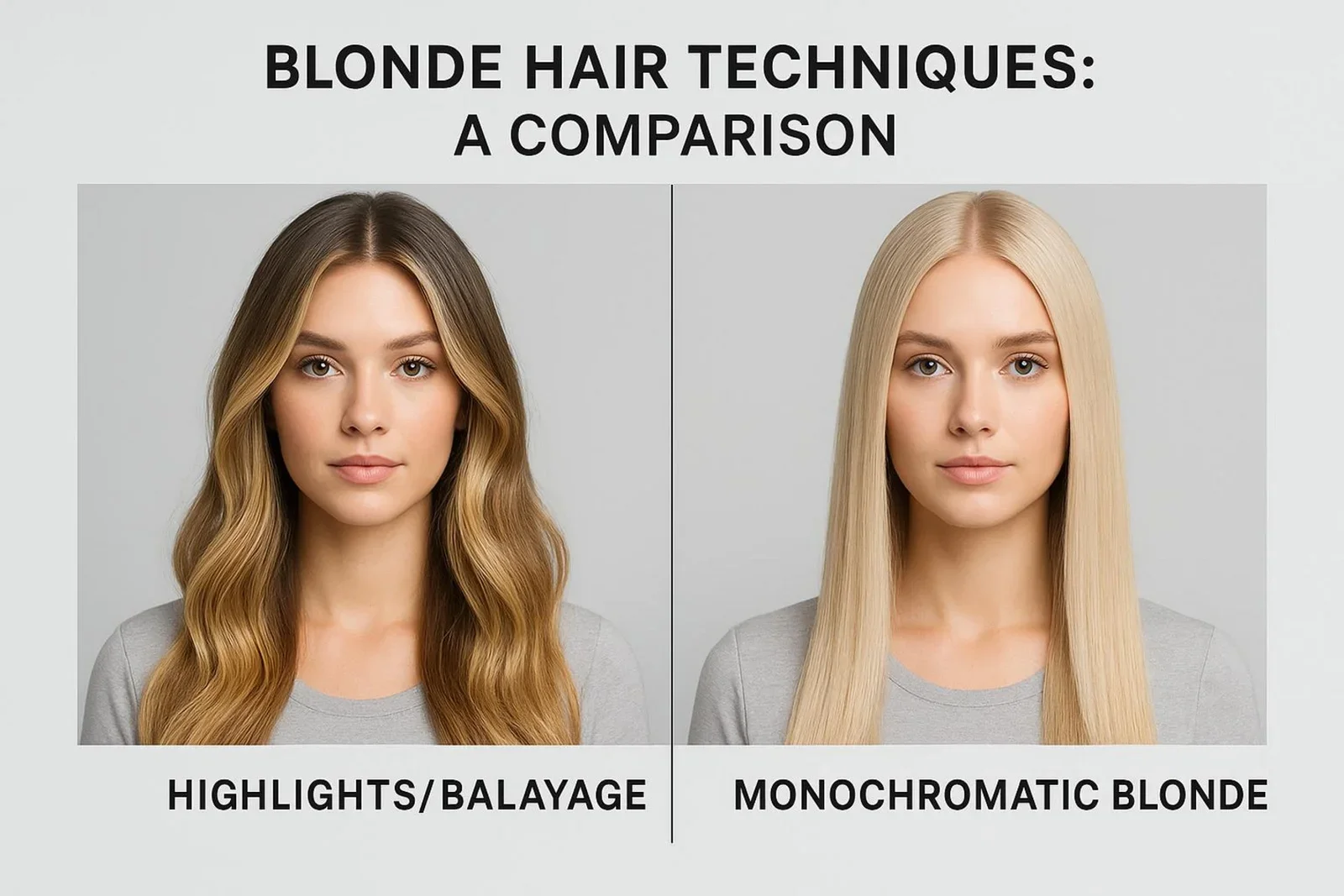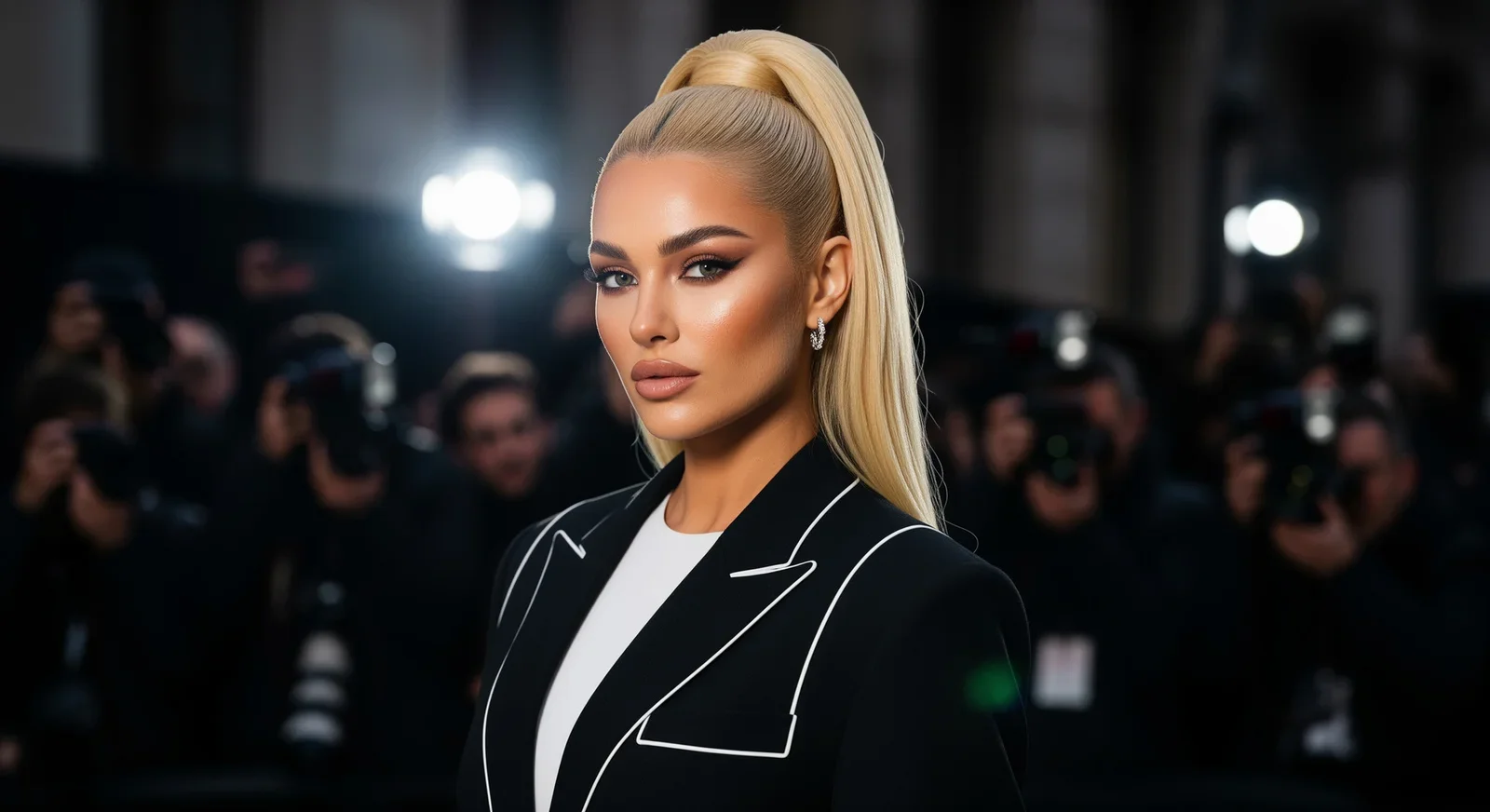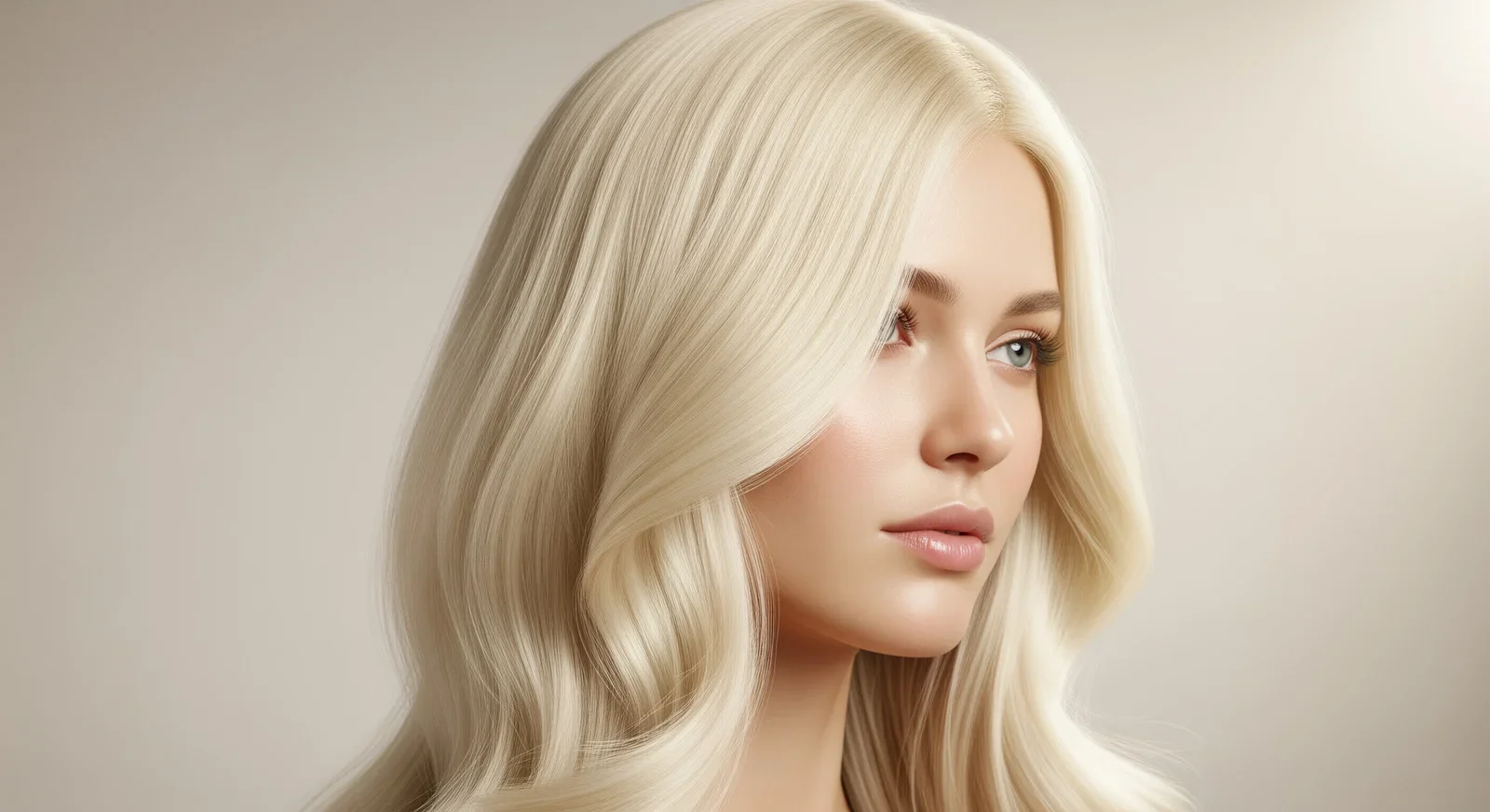Why Everyone Is Obsessed With Monochromatic Blonde
The buzz around monochromatic blonde hair isn’t a quick fad; it’s a real shift in hair style, moving away from multi-tone looks to one strong, all-over color. This even blonde shade has won over trendsetters and celebrities, offering a clean, polished alternative to detailed styles like highlights and balayage. It meets a wish for simplicity and elegance, making a bold point without layers of different tones. This article will explain what monochromatic blonde means, why it’s taken off, and what to think about if you want this striking change.
What is monochromatic blonde?
Monochromatic blonde is all about one shade from root to tip. Think of hair colored in a single, even blonde with no breaks or shifts. Unlike classic blonde looks that mix different tones, this sticks to one smooth hue all over. The result is a sharp, modern look that feels very chic.
What makes a blonde shade monochromatic?
A blonde is truly monochromatic when there’s no change in tone anywhere. No lighter face-framing pieces. No darker strands for depth. The hair is dyed fully blonde in one shade. Whether you pick cool platinum, warm honey, or creamy beige, the same color goes across the entire head for a solid, unified finish that stands out and looks refined.
Monochromatic blonde versus traditional blonde highlights
Traditional highlights lighten selected sections to create depth with different shades that blend with your base color. Balayage paints lighter pieces freehand, often on the mid-lengths and ends, for a soft, sun-kissed effect. Monochromatic blonde skips both approaches. As stylist Vanja Naserzare explains, the process colors the whole head blonde, with no highlights or shading. No weaving, no subtle blends-just one strong, even tone that makes a clear statement.
Why is everyone obsessed with monochromatic blonde?
This look has grown fast thanks to taste shifts, celebrity support, and even some deeper feelings about clarity and confidence. It picked up with fashion insiders last autumn and is now moving into the mainstream, showing how wide its appeal is.
The appeal of simplicity and sophistication
When life feels busy and noisy, simple style can feel calm and sharp. A single blonde shade looks clean and put-together without being flashy. It lets the hair’s condition and shine take the spotlight. You don’t need lots of tones to make an impact-one bright shade can do the job.
Celebrity and social media influence
Famous people and social platforms shape beauty trends. Blonde hair has long been a cultural favorite, linked to icons like Marilyn Monroe, Reese Witherspoon, and Beyoncé. On TikTok, the blonde hair hashtag has over 22 billion views. Once celebrities and street-style leaders showed off even, all-over blonde, the look became something many people wanted. Social media then spread it fast.
Psychological factors driving the trend
Blonde hair has often been tied to ideas like light, purity, and status. Even if many blondes come from a bottle, the pull remains. A single blonde shade can feel clear and decisive in a messy world. It reads as confident and intentional. The cost and upkeep (which can reach thousands of pounds a year) can also signal a high-end choice, which adds to the appeal.
Should you go monochromatic blonde?
Going all-over blonde is a big step. The look is strong and beautiful, but think about whether this bold, uniform color fits your style and your daily life. It takes planning and steady upkeep.
Who suits monochromatic blonde best?
This look can be striking on many people, especially those ready to make a clear style statement. It works well with strong features because the even color draws the eye to the face. If you like a clean, modern feel, you may love it. Keep in mind: the wrong blonde can wash out some skin tones, so a careful chat with a pro colorist matters.
Factors to think about before booking your appointment
Hair health: Bleaching can be hard on hair. Get your hair in the best shape you can first to lower damage.
Commitment: Roots show fast with an all-over blonde, so expect regular touch-ups. This takes time and money.
Shade choice: The right blonde depends on your starting color and goal. Your stylist may use a color lightener (lifts up to five levels) or bleach (up to seven).
What should you keep in mind when colouring your hair blonde?
Starting a blonde change, especially a full-head one, takes more than a mood. You need to think about hair health, possible risks, and steady care after the appointment. Getting great blonde is a long game, and prep helps a lot.
Preparation and maintaining hair health
Before a big blonde service, especially with bleach, get your hair into its best shape. Use nourishing treatments and deep masks, and cut down on heat tools in the weeks before. A healthy base handles chemicals better and reduces damage. During coloring, pros can mix bonding or conditioning agents into the bleach to help repair broken bonds as the hair lifts. A good colorist will also adjust timing for your hair type, especially for fine hair, to avoid stress and breakage.
Potential hair and scalp damage risks
Bleaching can cause dryness, breakage, and higher porosity if done poorly. In the past, harsh bleaches caused serious damage, like with Jean Harlow in the 1930s. Today’s products are safer, but dyes are still seen as hormone disruptors and can harm the gastrointestinal system. Some studies also link hair dye use to higher cancer risk, especially for women of color. Even for simple all-over blonding, seeing a pro is highly recommended. They can check your hair, apply products safely, and protect your scalp. Wrong use or timing can lead to irritation or chemical burns, so knowing the risks helps you make a smart choice.
How can you achieve a true monochromatic blonde look?
Getting a smooth, even blonde is not a box-dye job. It needs solid color know-how, careful application, and attention to detail. The goal is a clean, uniform finish that looks intentional and stylish.
Professional colour techniques for even results
Skip DIY and book a pro, even for simple all-over blonding. The color goes from the roots through every strand for full coverage and even lift. This is not about special effects like balayage; it’s about careful full-head application. Your stylist may choose a color lightener (lifts up to five levels) or bleach (up to seven), depending on your base and target shade. A gloss or toner then fine-tunes the tone-cooler, icier, warmer, or softer-so it flatters your skin and reads as truly even.
Choosing the right shade for your skin tone
Picking the right blonde matters because you only have one shade across your whole head. A skilled colorist will look at your skin tone and undertone to find a color that flatters you instead of washing you out. Cool skin often pairs well with icy or platinum blondes. Warm skin generally looks better with golden, honey, or creamy tones.
| Skin tone | Suggested blonde shades |
|---|---|
| Cool | Icy, platinum, cool beige |
| Warm | Golden, honey, creamy |
Share your likes and ask for advice-the colorist is there to help you pick the best match.
Common mistakes and how to avoid them
Frequent problems include uneven application (patchy color), skipping hair prep (leads to damage and dullness), and over-processing (extreme breakage). Work with an experienced pro, be honest about your hair history, and follow their before-and-after care steps exactly. If the tone is off, a toner can correct it and give you the even shade you want.
How high-maintenance is monochromatic blonde?
Monochromatic blonde takes ongoing effort. The change looks exciting on day one, but keeping that clean, even shade needs routine care and regular salon visits.
Roots, regrowth and upkeep frequency
Because the color is uniform, regrowth stands out. Natural roots make a clear line against the blonde, so you’ll need touch-ups often. Timing depends on how fast your hair grows and how sharp you want the line to be. Most people go back every 4 to 10 weeks. For very light platinum, visits may need to be even closer together.
Aftercare you need
Use shampoo and conditioner with color protection to slow fading and keep glossing results longer.
Refresh gloss or toner to hold the target shade and fight brassiness.
Hydrate and repair: add weekly masks, leave-ins, and a heat protectant.
If your hair is very damaged, use a weekly treatment and limit heat styling.
Skipping aftercare can leave hair dull, brittle, and weak, undoing the work and cost of going monochromatic blonde.
Do you live in Sydney?
Get the perfect look at our salon – schedule your appointment now!
Our Services
Check Out Our Instagram
Check out our instagram
Check out our instagram and see our latest posts!
Check out our facebook
Check out our facebook and see our latest
posts!











